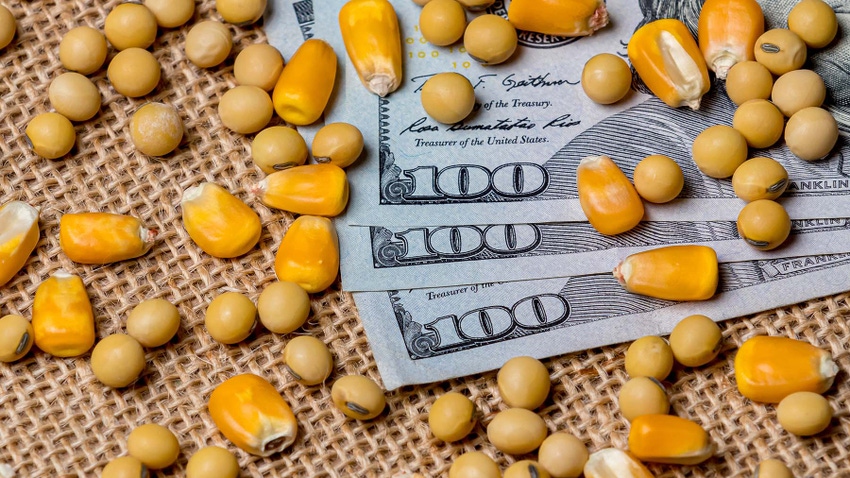
I won’t spend a lot of time on this, as we are already into March and talking about planting the 2024 crop. But I think it’s important to look back for just a second. Probably the biggest thing to be learned from 2023 with regard to grain marketing is you must stay consistent with your approach.
What can we learn from 2023?
There were so many times in 2023 when it was easy to get emotional about the weather or your crop…and completely abandon the marketing plan you set up to start the year. When you consider we were all making comparisons to the 1988 and 2012 crops as late as June 20, it’s hard to believe we would end up raising a record crop in many parts of the Midwest.
The market was just coming off $7 corn and $15 beans, and our input costs were at the highest level in history. But if you were able to shut off the noise and just focus on executing your strategy, then you likely took home $5+ corn and $13+ beans. Both of those prices are significantly higher than today’s current market and offer a fitting example of how having a plan – and then sticking with that plan – is critical to successful marketing.
Where are we now?
The first two months of 2024 were very challenging for grain marketing. Regardless of what new information the market had to discuss, the trade’s only view was bearish. The funds just kept piling on, adding to their short position with each week that passed.
As much as I hate to admit it, that is very understandable when you consider just two things.
The 2023 U.S. crop was so much better than any of us expected.
The U.S. farmer had very little grain forward priced going into fall 2023. As a result, a huge portion of that unsold grain was placed in storage or on basis versus the March 24 futures.
The month of March is a common time for farmers to need cash because pre-pay input dollars and cash rent are due. The market seemingly did not give upside rally opportunities in December, January, or early February, and farmers were faced with pricing bushels at the last minute in February.
What can we expect in 2024?
In my opinion, the market has been able to stomach that huge glut of grain that needed to be priced. It’s almost like it took a sigh of relief and is now ready to re-focus on both South American weather and U.S. planting prospects.
In the last three weeks, new crop prices have rallied almost 30 cents in Dec 2024 corn and 75 cents in Nov 2024 soybeans. I expect this renewed volatility to continue at least until we get a better handle on the Brazilian safrinha corn crop as well as the U.S. planting progress.
But don’t sit back and simply hope that things continue to get better. With a warmer/drier U.S. forecast, the Midwest will get off to a good start. Not always, but usually, an early start leads to a better-than-average yielding crop.
What can we do today?
Right now, based on our current fundamentals, the USDA 2024 expected farm price for corn is $4.30 and for soybeans is $10.50. Dec 24 futures are trading around $4.75 and Nov 24 futures are trading around $12.00. With both markets trading considerably higher than the expected farm price, it seems like the perfect time to consider locking in these prices.
One way to do that would be to use options.
If you are bearish and worried that prices might go lower, simply selling today’s price and backing that sale with a call option would make the most sense. The sale would take advantage of the recent rally, but the call option would give you the chance to gain on your sale if the market continues higher.
If you are bullish about prices going forward, but don’t want to miss the chance to lock in today’s levels in case you are wrong, then staying unsold in the cash market and buying puts is your answer.
Staying unsold would allow you to gain penny-for-penny in the futures market, but buying the put would protect your unsold position. Right now, Dec ‘24 $4.60 full-term puts are trading around 30 cents, and Nov ‘24 $11.40 full-term puts are trading around 40 cents. Both the “sell cash/buy call” and “unsold cash/buy put” strategies would establish floor prices, but they would also still give you upside potential.
What about break-even?
The biggest push-back I have right now from customers regarding 2024 marketing is that the current levels won’t cover their break-even costs. This is a major issue and something that I take very seriously!
That being said, the market isn’t concerned with break-even levels. The purpose of the futures market is to establish a price that fairly represents the supply/demand fundamentals that exist today. Price will then adjust as those fundamentals change.
If you are waiting to do any marketing for 2024 because current price levels won’t cover your break-even costs, proceed with caution. Doing nothing may just create a bigger hole. Consider a different approach. Look at establishing floor levels that still allow for potential price increases.
And remember, block out the noise and stay consistent. If you do that, I believe 2024 will turn out better than you expected!
Contact Advance Trading at (800) 747-9021 or go to www.advance-trading.com.
Information provided may include opinions of the author and is subject to the following disclosures:
The risk of trading futures and options can be substantial. All information, publications, and material used and distributed by Advance Trading Inc. shall be construed as a solicitation. ATI does not maintain an independent research department as defined in CFTC Regulation 1.71. Information obtained from third-party sources is believed to be reliable, but its accuracy is not guaranteed by Advance Trading Inc. Past performance is not necessarily indicative of future results.
The opinions of the author are not necessarily those of Farm Futures or Farm Progress.
About the Author(s)
You May Also Like






